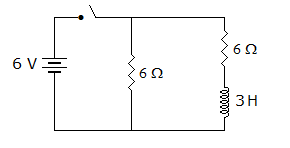Electronics and Communication Engineering - Electronic Devices and Circuits
Exercise : Electronic Devices and Circuits - Section 3
- Electronic Devices and Circuits - Section 14
- Electronic Devices and Circuits - Section 27
- Electronic Devices and Circuits - Section 26
- Electronic Devices and Circuits - Section 25
- Electronic Devices and Circuits - Section 24
- Electronic Devices and Circuits - Section 23
- Electronic Devices and Circuits - Section 22
- Electronic Devices and Circuits - Section 21
- Electronic Devices and Circuits - Section 20
- Electronic Devices and Circuits - Section 19
- Electronic Devices and Circuits - Section 18
- Electronic Devices and Circuits - Section 17
- Electronic Devices and Circuits - Section 16
- Electronic Devices and Circuits - Section 15
- Electronic Devices and Circuits - Section 1
- Electronic Devices and Circuits - Section 13
- Electronic Devices and Circuits - Section 12
- Electronic Devices and Circuits - Section 11
- Electronic Devices and Circuits - Section 10
- Electronic Devices and Circuits - Section 9
- Electronic Devices and Circuits - Section 8
- Electronic Devices and Circuits - Section 7
- Electronic Devices and Circuits - Section 6
- Electronic Devices and Circuits - Section 5
- Electronic Devices and Circuits - Section 4
- Electronic Devices and Circuits - Section 3
- Electronic Devices and Circuits - Section 2
41.
Assertion (A): The function  is not positive real.
is not positive real.
Reason (R): The degrees of numerator and denominator differ by 2
Answer: Option
Explanation:
If degrees of numerator and denominator differ by more than 1, the function is not positive real.
42.
Two sinusoidal voltage sources v1 = 50 sin (100t) and v1 = 50 sin (100t + p) are connected in parallel and fed an inductance XL = 2Ω. The cuirent through XL is
Answer: Option
Explanation:
Since voltages have a phase difference of 180°, current is zero.
43.
In figure, the current after a long time after closing of switch is


Answer: Option
Explanation:
At t = ∞ the circuit has effectively two 6Ω resistances in parallel.
44.
A system function  , the system is at rest for t < 0. For i(t) = u(t), then v(t) is given by
, the system is at rest for t < 0. For i(t) = u(t), then v(t) is given by
 , the system is at rest for t < 0. For i(t) = u(t), then v(t) is given by
, the system is at rest for t < 0. For i(t) = u(t), then v(t) is given byAnswer: Option
Explanation:
 .
.
45.
Two voltages 50 V each have a phase difference of 45°. The rms value of resultant sum of the two voltages is
Answer: Option
Explanation:
RMS value = (50 + 50 x 0.707)2 + (50 x .707)2.
Quick links
Quantitative Aptitude
Verbal (English)
Reasoning
Programming
Interview
Placement Papers